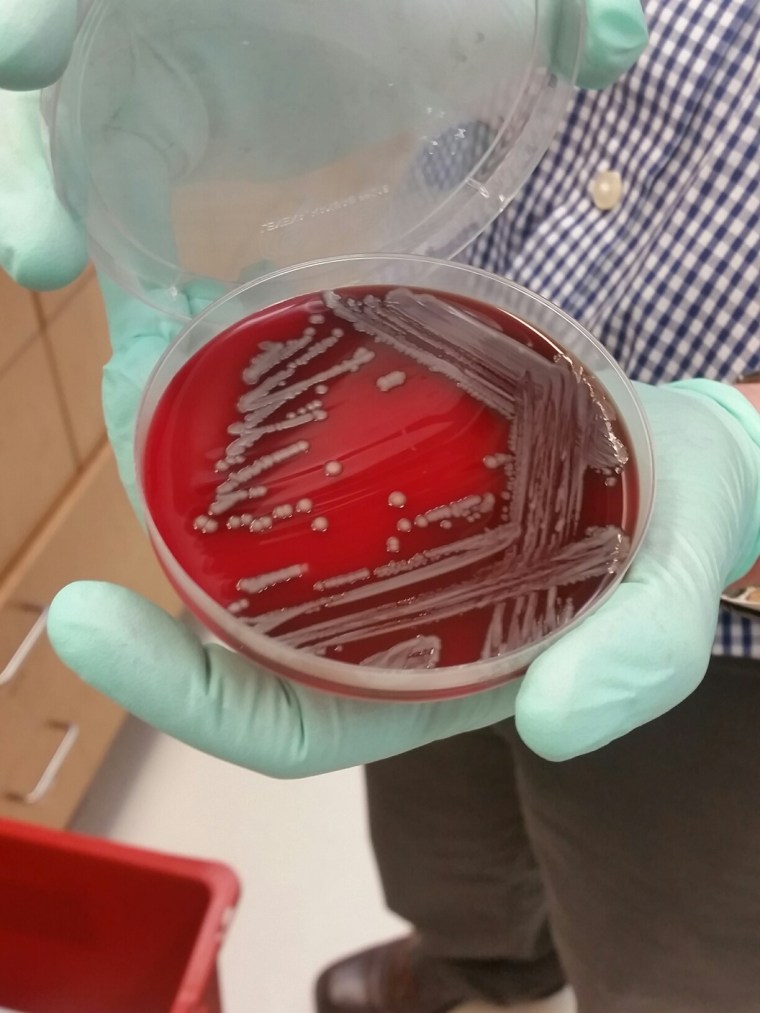Medical detectives said Friday they are still baffled about how much-feared drug-resistant superbugs infected two people in the U.S. this year, but they have good news: both patients recovered and don’t seem to have infected anyone else.
The medical team also reported the fourth known case in the U.S., involving a Connecticut toddler.

The case of a woman in Pennsylvania startled public health officials and made headlines last May.
She was found to be carrying E. coli bacteria that had acquired a gene called mcr-1. This gene gives bacteria the ability to withstand the effects of last-ditch antibiotics.
Luckily, the women recovered and did not appear to infect anyone else, the team at the Pennsylvania Department of Health and the Centers for Disease Control and Prevention reported.
Related: Feared Superbug Found for the First Time
“These findings suggest that the risk for transmission from a colonized patient to otherwise healthy persons, including persons with substantial exposure to the patient, might be relatively low,” they wrote in a report released by the CDC Friday.
Scientists fear an E. coli bacteria with the mcr-1 gene could pass it to another superbug with other mutations -- creating a true superbug that resists all known antibiotics.
“It is not known how the patient became colonized."
They’ve been looking for mcr-1 since it was first seen in China in 2015. News of the Pennsylvania patient was so alarming that CDC Director Dr. Tom Frieden at first told reporters the infection was indeed resistant to all known antibiotics. Doctors later clarified that this particular infection only involved the mcr-1 gene and the patient had in fact recovered.
What makes mcr-1 more frightening is that it’s found on a plasmid. Bacteria can easily swamp this little stretch of DNA back and forth, helping pass along the superbug trait.
Related: Here's Why That Superbug Scares Doctors
The Pennsylvania health team contacted everyone who had been near the infected patient, who had no known risk factors for catching mcr-1.
“It is not known how the patient became colonized, especially in the absence of an epidemiologic link to known persons or places with identified mcr-1,” Kelly Kline of the Pennsylvania Department of Health and colleagues wrote.
Related: Inside the Lab Looking for the Next Big Threat
“The patient had no international travel for approximately one year, no livestock exposure and a limited role in meal preparation with store-bought groceries; however, she had multiple and repeated admissions to four medical facilities during 2016,” they added.
They tested health care personnel from the two high-risk facilities where the patient had been treated, plus 20 people who had high-risk contact, such as a hospital roommate, family and friends and nurses who bathed her.
“No bacteria with the mcr-1 gene were detected among the 105 persons screened,” the team wrote.
This particular E. coli doesn’t appear to have made the patient sick. She had other infections, and she wasn’t treated for the E. coli infection. When people carry bacteria that don’t sicken them, it’s called colonization.
The patient tested negative for the mcr-1 carrying E. coli on August 1.
“No bacteria with the mcr-1 gene were detected among the 105 persons screened."
Since this case, three other U.S. patients have been identified with bacteria carrying the mcr-1 plasmid. The CDC’s Amber Vasquez and colleagues investigated the case of a Connecticut toddler who turned up with E. coli carrying mcr-1 in June.
“The patient traveled to the Caribbean for approximately two weeks to visit friends and relatives and developed fever and bloody diarrhea on June 12, two days before returning to the United States,” the team reported.
“The patient was typically healthy with no prior surgeries or hospitalizations. The patient’s usual diet included fruit, dairy products and meat (pork, chicken and beef).”
The diet is important because the mcr-1 gene has been found in meat from food animals, including pigs.
“While traveling, the patient ate chicken and goat meat from a live animal market that the patient did not visit. The patient stayed in a home with a pet cat and dog in the Caribbean but did not have any animal contact in the United States,” the team added.
Related: Can Pets Carry Superbugs, Too?
The team tested six household and family members and the patient’s diapers.
“Bacteria with the mcr-1 gene were not detected by real-time polymerase chain reaction in any specimen, indicating that the patient and family members were not colonized with bacteria carrying mcr-1,” they wrote.
“Sixteen environmental samples collected from surfaces in the kitchen and diaper changing area of the patient’s home were negative for the presence of mcr-1. The patient did not have close contact with other persons after returning to the United States.”
Again, the child cleared up the mcr-1 E. coli on her own, the team said.
Researchers are sure they’ll find more people carrying superbugs with the mcr-1 gene.
“Since its discovery, the mcr-1 gene has been reported from Africa, Asia, Europe, South America and North America, including the United States, where it has been identified in Escherichia coli isolated from three patients and from two intestinal samples from pigs,” the CDC team wrote.
Drug-resistant bacteria are nothing new.
Just nine years after tetracycline was introduced in 1950, a resistant strain of Shigella evolved. Methicillin-resistant Staphylococcus aureus (MRSA) evolved just two years after methicillin hit the market in 1960. The last new antibiotic to be introduced was ceftaroline, in 2010. It took just a year for the first staph germ to evolve that resisted its effects.
The CDC says more than 2 million people are infected by drug-resistant germs each year, and 23,000 die of their infections.
